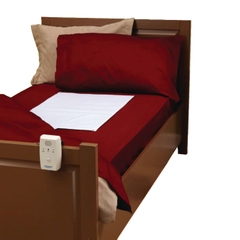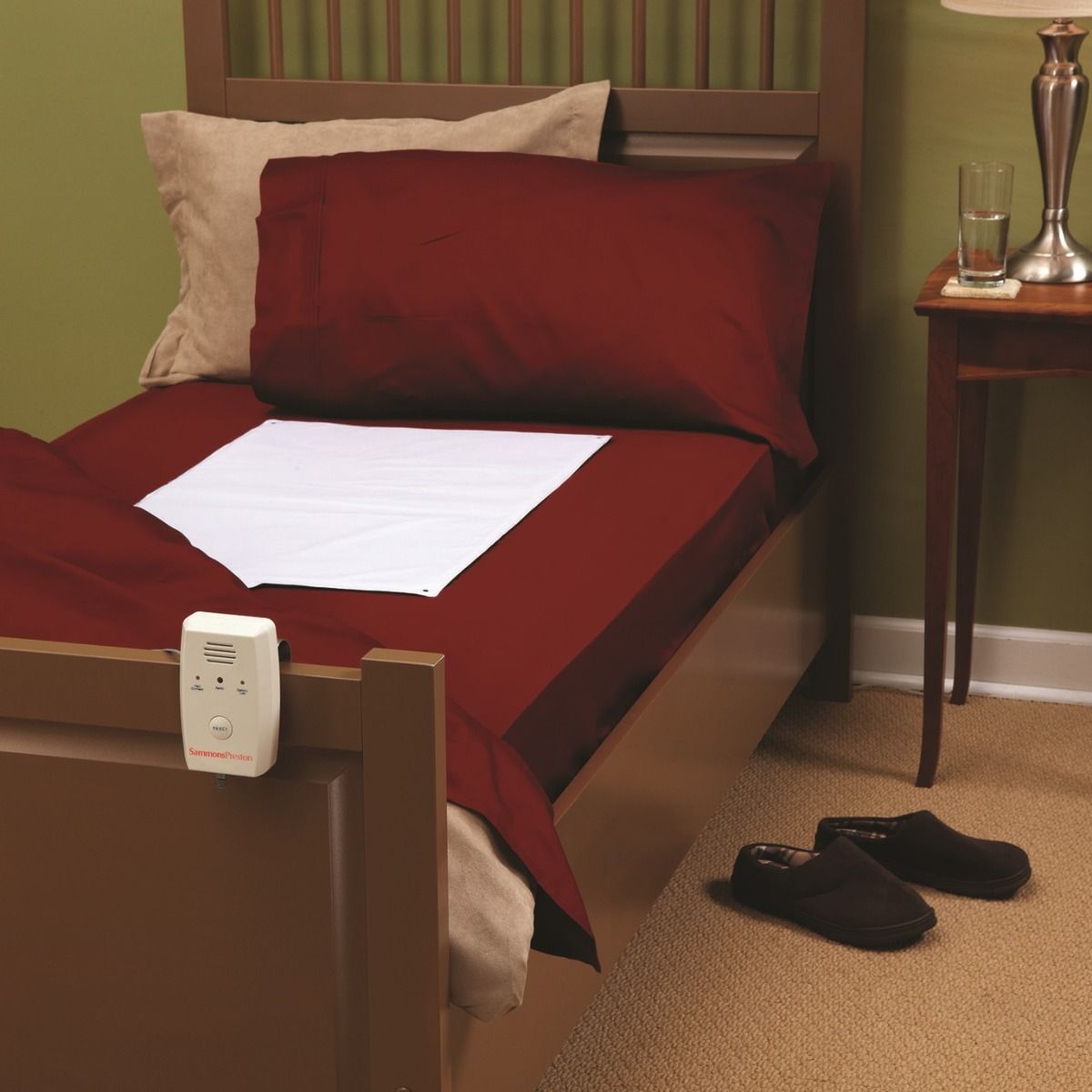More than 850,000 people in the UK are living with Alzheimer’s disease.1 Not only can this affect their life, but it can also affect their caregiver’s life. This article breaks down daily living aids that can help relieve the stress that comes with Alzheimer’s.
Key Takeaways
- More than 850,000 people in the UK have Alzheimer’s disease.1
- The most common form of dementia, Alzheimer’s is a progressive disease that causes memory loss.1
- Alzheimer’s and other conditions can make daily tasks like eating, dressing, bathing, and walking difficult
- Daily living aids can help people with Alzheimer’s disease stay independent and help caregivers.
Top Products in This Article
What is Alzheimer’s disease?
Alzheimer’s disease is a form of dementia. It’s a progressive disease that affects memory, thinking, and behavior. Common symptoms include memory loss, confusion, and cognitive difficulties.
What symptoms of Alzheimer’s disease make independent living difficult?
Memory loss, disorientation, confusion about events and time, problems walking or swallowing, and other symptoms can make completing daily living activities more difficult. This might include eating, bathing, dressing, or remembering to take medication. Other conditions like arthritis can further impede the ability to live independently, but aids to daily living can help!

Table of Contents
Dining
Bathing
Dressing and Grooming
Medication
Sleep
More
Tips and Aids for People with Alzheimer’s Disease and their Caregivers
Dining
People in the middle and late stages of Alzheimer’s disease may forget to eat, think they have already eaten, or become overwhelmed with too many food choices. These tips and aids can help!
Dining Tips
- Limit distractions during meals by serving them in a quiet place without a TV.
- Keep the table setting simple and choose food and drink that makes it easier to distinguish between the food and the plate.
- Offer one or two food items at a time. This can help prevent the person from becoming overwhelmed and unable to decide between food choices.
- Eat together and allow plenty of time to eat.
- If the person cannot remember when they last ate and continues to ask about a meal, like breakfast, consider serving several smaller breakfasts like toast, followed by eggs, followed by juice.
- Always check the temperature of food and drinks before serving, since people with Alzheimer’s disease may not be able to tell if the meal or drink is too hot.
- Be flexible with food preferences. The person might change their mind about foods they have liked or disliked in the past.
- Prepare foods that are easy to chew by cutting food into bite-size pieces, serving soft food like applesauce or yogurt, and offering finger foods.
- Make the most of the person’s abilities by offering adaptive utensils and dishes that are easier to eat from.
- Don’t worry about the mess. Let the person with Alzheimer’s be as independent as possible and use cups with lids, clothing protectors, and other tools to help keep your kitchen clean.
- If the person needs assistance, try hand-over-hand feeding where the person holds the utensil and you guide it to their mouth.
Four Dining Aids
1. Utensils with larger handles are easier to hold, especially for people with arthritis.
2. Use a utensil holder with your existing utensils to aid in grasping.
3. Clothing protectors, like bibs, help keep clothing clean during meals.
4. Choose a cup or a mug with a lid and a large handle to make it easier to hold and reduce the risk of spills.
Bathing
People with Alzheimer’s disease can find needing assistance while bathing uncomfortable or embarrassing. This can make them resist bathing, but there are ways to make the process easier for everyone involved!
Bathing Tips
- Have all your supplies ready and within reach. Simplify the process by using a shower gel/shampoo all- in- one or using wash mitts with a pocket for the soap.
- Monitor the temperature of the water since the person may not be able to determine the correct temperature on their own.
- Offer a choice- would the person prefer a bath or shower? Do they want to bathe now or in half an hour?
- Give the person a role in the bathing process, allowing them to hold a washcloth or bottle of shampoo and do as much as they are able to.
- Use simple phrases to guide the person through the process and demonstrate the action.
- Use a bath bench or shower chair so the person can sit while bathing.
- Allow the person to get into the tub or shower with a towel on to reduce embarrassment. A handheld showerhead allows you to uncover the body in sections to maintain privacy.
- If the person usually bathes in the evening, try to keep the same routine. A shower in the morning might be confusing.
- Sing songs, play music, or tell stories during the process to help distract the person.
- Shampooing can be challenging. Try to keep the person’s face dry by using a washcloth. Shampoo on a different day of the week, or try using an alternative option.
- Have a familiar person help with bathing if that makes the person with Alzheimer’s more comfortable, or have a trained caregiver come into the house to bathe the person.
6 Bathing Aids
1. A non-slip bath mat helps prevent falls for people who still have good balance.
2. Choose a small shower mat for traction in smaller showers.
3. A wash mitt that can hold the soap makes it easier to wash up.
4. A bath bench offers a place to sit for those who are unsteady on their feet.
5. Reduce the risk of slips and falls by adding a shower chair.
6. If shampooing if difficult, an inflatable shampoo basin can be used to wash hair in bed.
Dressing and Grooming
Choosing and putting on clothes can become frustrating for people with Alzheimer’s disease. It can be overwhelming to decide between all the outfit possibilities in a full closet, or the person may not remember how to get dressed. Other conditions like arthritis can make the task even more difficult, causing struggles when buttoning shirts or zipping up jackets. Learn how dressing aids can help!
Dressing and Grooming Tips
- Simplify choices to avoid overwhelming the person who is choosing. Offer two different outfits and let them pick what to wear today.
- Lay clothing out in the order it should be put on. Or hand the clothes to the person in order.
- Offer specific instructions, like “put your arms through the shirt sleeves” instead of general instructions like “get dressed."
- Choose simple comfortable clothing. Avoid buttons, snaps, and zippers, which can be difficult in the early stages. Instead, offer dressing aids to make these tasks easier.
- Choose comfortable shoes and look for options that don’t require tying the laces.
- Be flexible. If the outfit is mismatched, it’s okay. If the person wants to wear the same outfit for multiple days in a row, consider buying duplicates.
- Break down grooming and teeth brushing into simple steps like “Pick up the toothbrush,” “Put toothpaste on the brush,” and “Brush your teeth.”
- Use a “watch me” technique to demonstrate hair brushing or toothbrushing or gently guide the action by placing your hand over theirs.
Three Dressing and Grooming Aids
1. A button hook and zipper puller has a large handle making it easy to hold while assisting with small buttons and zippers.
2. Tylastic shoelaces are elastic shoelaces that allow you to tie the laces once and then slip the shoes on and off after that.
3. A longer shoehorn allows you to slip into shoes without bending down or crushing the backs of the shoes.
Medication
It’s important for everyone on medication to understand its purpose and take the medication as directed. Alzheimer’s disease can make it difficult to remember when to take medication or why it’s important. Pill organizers and other tips can help!
Medication Tips
- Keep a list of all current medications (including name, dosage and starting date) and carry it with you.
- In early stages of the disease, use a pill organizer to help ensure the person takes the medication as prescribed.
- In later stages, you may want a pill organizer that gives a verbal prompt to take the medication or even an organizer that locks.
- As you provide a higher level of care, give simple clear instructions: “This is your high blood pressure medicine. Put the pill in your mouth and drink some water.”
- If the person refuses to take the medication, stop and try again later.
- If swallowing is difficult, ask the doctor who prescribed it or the pharmacist if it comes in another form, like a liquid, or if the pill can be safely crushed and mixed in food (always ask before crushing medication).
- Have emergency numbers easily accessible. If you suspect a medication overdose, call poison control or 911 before taking any action.
Medication Organizers
A basic pill organiser is useful for organizing medication during early stages of the disease. This can help lower the risk of overdosing on medications due to not remembering if the pill medication has been taken.
Sleep
Alzheimer’s disease often affects a person’s sleeping habits. Trouble sleeping and poor sleep patterns may occur. The person may wake up disoriented and get dressed or try to leave the house even though it’s still nighttime. These tips may help.
Sleeping Tips
- Make sure the person has plenty of activities and gets daylight during the day
- Daily exercise may help some people sleep better, but avoid exercise at the end of the day
- Add a clock next to the bed that states if it’s morning or nighttime
- Add a nightlight and clear any trip hazards in case they get up during the night
- Set a peaceful mood in the evening with low lights and soothing music
- Keep a routine so bedtime occurs at the same time every day
- Limit drinks with caffeine and avoid them after 2 p.m.
- A bed alarm can alert you if the person gets out of bed
- If the person gets up, gently remind them that it’s nighttime
Bed Alarms
A bed sensor bed alarm beeps to alert you when weight is removed from the sensor pad, allowing you to intervene.
References
1. Alzheimer’s Society. (n.d). Alzheimer’s Society’s view on demography. https://bit.ly/3uIEEfvCenters for Disease Control and Prevention. (2020). Alzheimer’s Disease and Related Dementias. CDC. Retrieved from https://bit.ly/3dLHGrx
2. Alzheimer’s Association. (n.d.). What is Alzheimer's Disease? Alzheimer's Association. Retrieved from https://bit.ly/2QNUKUi
3. Alzheimer’s Association. (n.d.). Food and Eating. Alzheimer’s Association. Retrieved from https://bit.ly/2QtCz6n
4. Alzheimer’s Association. (n.d.). Bathing. Alzheimer’s Association. Retrieved from https://bit.ly/3dNony2
5. Alzheimer’s Association. (n.d.). Dressing and Grooming. Alzheimer’s Association. Retrieved from https://bit.ly/3sGCPfu
6. Alzheimer’s Association. (n.d.). Medication Safety. Alzheimer’s Association. Retrieved from https://bit.ly/32MgyCg
7. Alzheimer’s Society United Against Dementia. (n.d.). Sleep disturbance and waking up at night. Alzheimer’s Society United Against Dementia. Retrieved from https://bit.ly/3emcIFy
Medical Disclaimer: The information provided on this site, including text, graphics, images, and other material, are for informational purposes only and are not intended to substitute for professional medical advice, diagnosis or treatment. Always seek the advice of your physician or other healthcare professional with any questions or concerns you may have regarding your condition.






 US
US France
France Australia
Australia





















